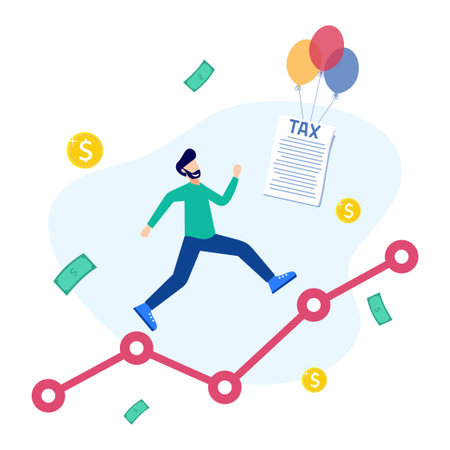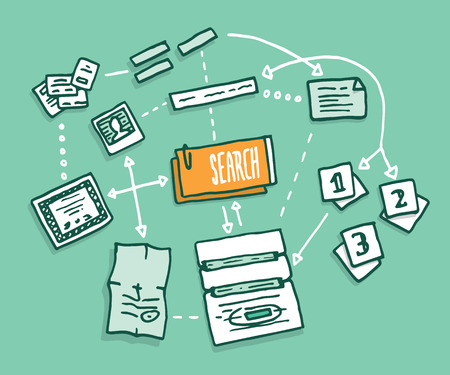Understanding Crawl Budget
If youre working on improving your websites SEO, youve probably heard the term “crawl budget” thrown around. But what exactly is crawl budget, and why should you care about it?
What Is Crawl Budget?
Crawl budget refers to the number of pages on your website that search engines like Google will crawl and index within a specific timeframe. In simple terms, its the amount of attention Googlebot gives to your site. Think of it as your sites allowance for being scanned and understood by Googles bots.
How Crawl Budget Works in Googles Indexing System
Google uses automated bots called crawlers (or Googlebot) to discover new and updated content across the web. When these bots visit your site, they follow links and scan pages to understand what your content is about. However, they don’t have unlimited time or resources. That’s where crawl budget comes in—it determines how many of your pages get visited during each crawl session.
Main Factors That Influence Crawl Budget
| Factor | Description |
|---|---|
| Crawl Rate Limit | The maximum number of requests Googlebot can make without overwhelming your server. |
| Crawl Demand | The level of interest Google has in crawling your site based on its popularity and freshness of content. |
| Site Health | Fast-loading, error-free sites are easier for Googlebot to crawl efficiently. |
| Duplicate Content | Too many similar pages can waste crawl budget without adding SEO value. |
Why Crawl Budget Matters for SEO
Crawl budget becomes especially important for large websites with thousands—or even millions—of URLs. If Google doesn’t crawl all your important pages, some content may never appear in search results. By understanding and optimizing your crawl budget, you help ensure that the right pages are getting indexed and ranked.
Examples of Sites That Should Monitor Crawl Budget Closely:
- E-commerce sites with dynamic product pages
In short, knowing how crawl budget works helps you make smarter decisions about your sites structure, internal linking, and technical SEO—so that more of your valuable content gets seen by search engines and users alike.
2. How Search Engines Allocate Crawl Budget
Understanding how search engines like Google decide to crawl your website is key to improving your SEO strategy. Not all websites are crawled equally—search engines allocate their crawl budget based on several factors that help them determine which pages are worth visiting and how often.
What Influences Crawl Budget Allocation?
Crawl budget is the combination of two main elements: crawl rate limit and crawl demand. Let’s break down the major factors that affect both of these:
Crawl Rate Limit
This refers to the maximum number of requests a search engine will make to your site without overloading your server. If your server responds quickly and reliably, search engines may increase the crawl rate. If it’s slow or returns errors, they’ll back off.
Crawl Demand
This is how much Google or other search engines want to crawl your pages based on popularity and freshness. Pages that are updated frequently or receive a lot of traffic tend to be crawled more often.
Main Factors That Impact Crawl Budget
| Factor | Description |
|---|---|
| Site Authority | High-authority sites with quality backlinks usually get crawled more often. |
| Server Performance | If your site loads fast and handles requests well, search engines will increase crawling frequency. |
| Website Size | Larger sites tend to have a higher crawl budget, but it must be managed wisely so important pages get seen. |
| Update Frequency | Sites that are regularly updated signal freshness, prompting more frequent crawls. |
| Error Rates | Too many 5xx or 404 errors can cause search engines to reduce crawling activity. |
| Duplicate Content | If your site has many duplicate pages, it may waste crawl budget on low-value URLs. |
Why Crawl Budget Matters for SEO
If search engines don’t crawl your important pages often—or at all—they won’t be indexed properly. That means they won’t appear in search results, even if they’re optimized for keywords. By understanding what affects crawl allocation, you can make smarter decisions about technical SEO, content updates, and site structure.
Quick Tip:
You can monitor how Google crawls your site using tools like Google Search Console’s Crawl Stats report. This helps you spot issues early and adjust accordingly.
The better your site performs technically and in terms of content relevance, the more likely it is that search engines will prioritize crawling it—leading to stronger visibility in search results.

3. Common Issues That Waste Crawl Budget
Google’s crawl budget is limited, and wasting it on unnecessary or low-value pages can hurt your site’s overall SEO performance. Below are some of the most common issues that can drain your crawl budget and how to identify them.
Duplicate Content
When search engines encounter multiple versions of the same content, they may crawl each version separately—even though its essentially the same page. This wastes crawl resources and can lead to indexing issues. Duplicate content can be caused by:
- URL parameters (e.g.,
?sort=asc,?page=2) - HTTP vs. HTTPS versions
- WWW vs. non-WWW versions
- Session IDs or tracking codes in URLs
Tip: Use canonical tags, set preferred domain settings in Google Search Console, and configure URL parameters properly to avoid this issue.
Broken Links (404 Errors)
Crawlers spend time following internal links—if those links lead to broken pages (404 errors), it wastes crawl budget and provides a poor user experience. Broken links often result from deleted pages, incorrect URLs, or outdated references.
How to Fix:
- Use tools like Google Search Console or Screaming Frog to identify broken links
- Create 301 redirects for removed content when appropriate
- Update internal links to point to valid, relevant pages
Low-Value Pages
Crawling pages that provide little or no value can use up budget better spent on important content. Examples include:
| Type of Low-Value Page | Description | Action |
|---|---|---|
| Thin content pages | Pages with very little useful information (e.g., short product descriptions) | Noindex or consolidate into more valuable pages |
| Poorly structured archive/tag pages | Blog archives or tag pages with duplicate or near-identical listings | Noindex or limit via robots.txt if not useful for users |
| User-generated spam | Comment sections filled with irrelevant links or content | Moderate comments and block low-quality submissions |
| Paged results with little variation | Paged listings where each page offers minimal new info (e.g., forums) | Add rel=”next” and rel=”prev” tags; consider combining content |
Poor Internal Linking Structure
If important pages are buried deep within your site structure or not linked properly, crawlers may miss them altogether—or waste time navigating inefficient paths.
Tips to Improve Internal Linking:
- Create a clear and logical site hierarchy with categories and subcategories
- Add contextual links within blog posts pointing to related articles or product pages
- Avoid orphan pages (pages with no internal links pointing to them)
Dynamically Generated URLs and Faceted Navigation
E-commerce sites often face crawl budget issues due to filters and facets creating endless combinations of URLs (e.g., color, size, brand filters). Crawlers may interpret these as unique pages even if the content is nearly identical.
How to Control This:
- Add rules in robots.txt to block crawling of certain parameter-based URLs
Avoiding these common pitfalls will help ensure that Google spends its limited crawl budget on the most important parts of your website—improving your chances of ranking well in search results.
4. Strategies to Optimize Your Crawl Budget
Google doesnt crawl every page of your site every day, which is why making the most of your crawl budget is essential for SEO. Below are practical strategies to help you get the most out of your sites crawl budget without overwhelming search engine bots.
Improve Your Site Architecture
A well-organized website makes it easier for search engines to discover and index important pages. When your site structure is clean and logical, crawlers can find and prioritize key content faster.
Tips to Improve Site Architecture:
- Use a flat hierarchy: Keep important pages within three clicks from the homepage.
- Create clear internal linking: Link related content together using descriptive anchor text.
- Maintain a sitemap: Submit an XML sitemap via Google Search Console to help crawlers discover all relevant URLs.
Use Robots.txt Wisely
The robots.txt file guides search engines on which parts of your site should or shouldnt be crawled. Blocking low-value or duplicate pages can prevent wasting crawl budget on unimportant areas.
Examples of What to Block with Robots.txt:
| Page Type | Reason to Block |
|---|---|
| /cart/ or /checkout/ | No SEO value, private user actions |
| /search-results/ | Dynamically generated, often duplicate content |
| /admin/ or /login/ | Sensitive areas not meant for indexing |
Manage URL Parameters Effectively
If your site uses parameters in URLs (like filters or sort options), these can create thousands of variations that clutter up your crawl budget without adding SEO value.
Tactics for Handling URL Parameters:
- Cannonical tags: Use canonical tags to signal the preferred version of a page.
- Noindex meta tag: Apply this tag to parameter-based pages that shouldnt appear in search results.
- Parameter settings in Google Search Console: Tell Google how to treat specific parameters (e.g., whether they change content).
Avoid Duplicate Content and Thin Pages
Crawling duplicate or low-value pages eats into your budget. Focus on keeping only valuable, unique content accessible to crawlers.
You Can:
- Noindex duplicate pages: Prevent them from being indexed if theyre necessary for users but not useful for SEO.
- Migrate or merge thin content: Combine similar low-value pages into one rich, informative resource.
Create a Crawl-Friendly Environment
Your technical setup impacts how easily bots can access your site. Fast-loading pages and reliable servers improve crawling efficiency.
Crawl Optimization Tips:
- Improve page speed: Faster sites lead to more efficient crawling and better user experience.
- Avoid broken links: Regularly audit and fix dead internal links that waste crawler time.
- Simplify JavaScript usage: Excessive or complex JS can delay or block crawling; make sure key content is visible without JS when possible.
Tweaking these areas can lead to better use of your crawl budget, ensuring that Google discovers and ranks the most important parts of your website efficiently.
5. Tools to Monitor and Improve Crawl Efficiency
To make the most of your crawl budget, its important to monitor how search engines are crawling your site and identify areas for improvement. Thankfully, there are some powerful tools available that can help you understand and optimize your website’s crawl activity.
Google Search Console
Google Search Console (GSC) is one of the most essential tools for tracking how Google interacts with your website. It provides insights into crawl stats, indexing issues, and more. Heres what you can do with GSC:
| Feature | How It Helps with Crawl Budget |
|---|---|
| Crawl Stats Report | Shows how often Googlebot visits your site, pages crawled per day, and response times. |
| Index Coverage Report | Identifies which pages are indexed or excluded, helping you fix issues like soft 404s or redirect loops that waste crawl budget. |
| URL Inspection Tool | Lets you check individual URLs to see how Google views them and if they’re being crawled effectively. |
Log File Analysis Tools
Analyzing server log files gives you a behind-the-scenes look at how search engine bots are actually crawling your website. Unlike GSC, which shows summarized data, log file analysis provides raw access logs showing every bot visit. Popular tools include:
| Tool | Main Features | Benefits for Crawl Optimization |
|---|---|---|
| Screaming Frog Log File Analyzer | Visualizes bot behavior across URLs, HTTP status codes, and crawl frequency. | Helps identify crawl waste and prioritize high-value pages. |
| Botify | Combines log data with SEO metrics for deeper insights. | Offers detailed reports on crawl distribution and performance bottlenecks. |
| Oncrawl | Merges log files with crawl data to highlight technical issues. | Makes it easier to detect patterns that hurt crawl efficiency. |
Other Useful SEO Tools
Besides GSC and log file analyzers, there are other platforms that can support your crawl optimization efforts:
- Screaming Frog SEO Spider: Simulates a bot crawl to uncover broken links, duplicate content, and redirect chains that may impact crawl budget.
- Ahrefs / SEMrush: Provide audits that flag technical SEO problems affecting site structure and discoverability.
- Sitebulb: Offers visual crawl maps and prioritization tips based on technical health scores.
Why Monitoring Matters
If youre not keeping an eye on how bots interact with your site, you could be wasting valuable crawl budget on low-priority or broken pages. By using the right tools regularly, you’ll gain the insights needed to guide bots toward your most important content—and away from dead ends or duplicate pages.
Pro Tip:
Set up regular checks using these tools to track changes in crawl activity over time. That way, if something suddenly goes wrong—like a spike in 404 errors—you’ll catch it before it affects your rankings or indexation rates.
The more efficient your sites crawling process is, the more likely search engines will surface the right pages in their results—boosting your overall SEO success.


